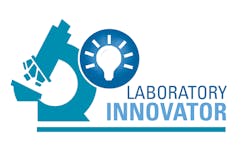Passion for innovation drives approach to HIT
I worked with ELLKAY as both a customer of the organization and as an adviser. I believe ELLKAY is in a space where there is an incredible need in our industry, and I have a passion around integration as well as a passion around innovation. I recognized that shared passion in ELLKAY and saw the potential to do even more than they are doing today.
Looking back to Intermountain Healthcare, what achievement are you most proud of and why?
It is not even a technology achievement. The thing I am most proud of is the management team that I built. I was so blessed to have a team – a broader team – that I could choose my leadership team from. I am very proud that it was the most diverse team that Intermountain has ever had. They brought incredible insights and background – whether it was technical, clinical, process, or administration. The diversity of this team brought a richness that improved our work and, frankly, me as a person.
The lack of interoperability among disparate health information systems has stymied clinical data analysis and decision support for many years. Do you expect interoperability to improve among these systems, including LIS systems? How will this happen?
I do think it can be improved. I was on the HIT Policy Committee (which provided recommendations to the National Coordinator for Health Information Technology on the meaningful use program for adoption of electronic medical records [EMRs]) for seven years.
During the last two years, we started to deal with interoperability and standards. Since that time, I think we have seen dramatic improvements. I have been a very big advocate for the role that the federal government needs to play to get to true interoperability and standards. It has taken a long time to get started on the curve. But once we are really on that curve, I think we will see a lot of improvement and more interoperable solutions.
How will increased data sharing between electronic health records (EHRs) and LIS impact the day-to-day work at laboratories?
On the lab side, there is huge consumption of data, and often the data that arrives at the lab is not completely accurate or complete. This missing or inaccurate data in the orders must be chased if the lab wants the claim to be processed, costing large amounts of staff time. They have got to receive orders in a way that missing or inaccurate data can be addressed on the front end, right when the order is placed. Then once results are ready to be provided, the line of communication is already clean.
The more standard we get and the more interoperable we get, the quicker things can happen within the labs. It is also going to allow for more comparative data within the industry about what is happening in the lab. One of the real benefits or goals that we should have with interoperability is the real sharing of knowledge – not just data that is in a standard format. It is the ability to take analytics and apply it to that data to give knowledge to the people who are receiving it.
Turning to COVID-19 testing and surveillance, what steps do you think need to be taken to develop a national, electronic system of reporting and aggregating information to monitor disease outbreaks?
We are getting some interesting new technologies around contact tracing (mobile apps that submit data about SARS-CoV-2 infections), and I think they are going to be important. The challenge is, in our society, people have the freedom to opt in or out of how that data gets shared. Another challenge is that the agencies receiving the reports need to be as sophisticated as those sending the reports, or they are not able to decode the data into meaningful results that can be used for the surveillance and detection of outbreaks.
Digital health technology and artificial intelligence will play key roles in our ability to manage a pandemic moving forward. Because there is enough metadata surrounding disease testing, if we can enact interoperability on a larger scale across the industry, I believe we could get really good at identifying what the hotspots are, where the spread from the hotspots is, and how those things relate to each other. With this information and technology, society is empowered to control pandemics or even prevent them from rising to that level of contagion altogether.

